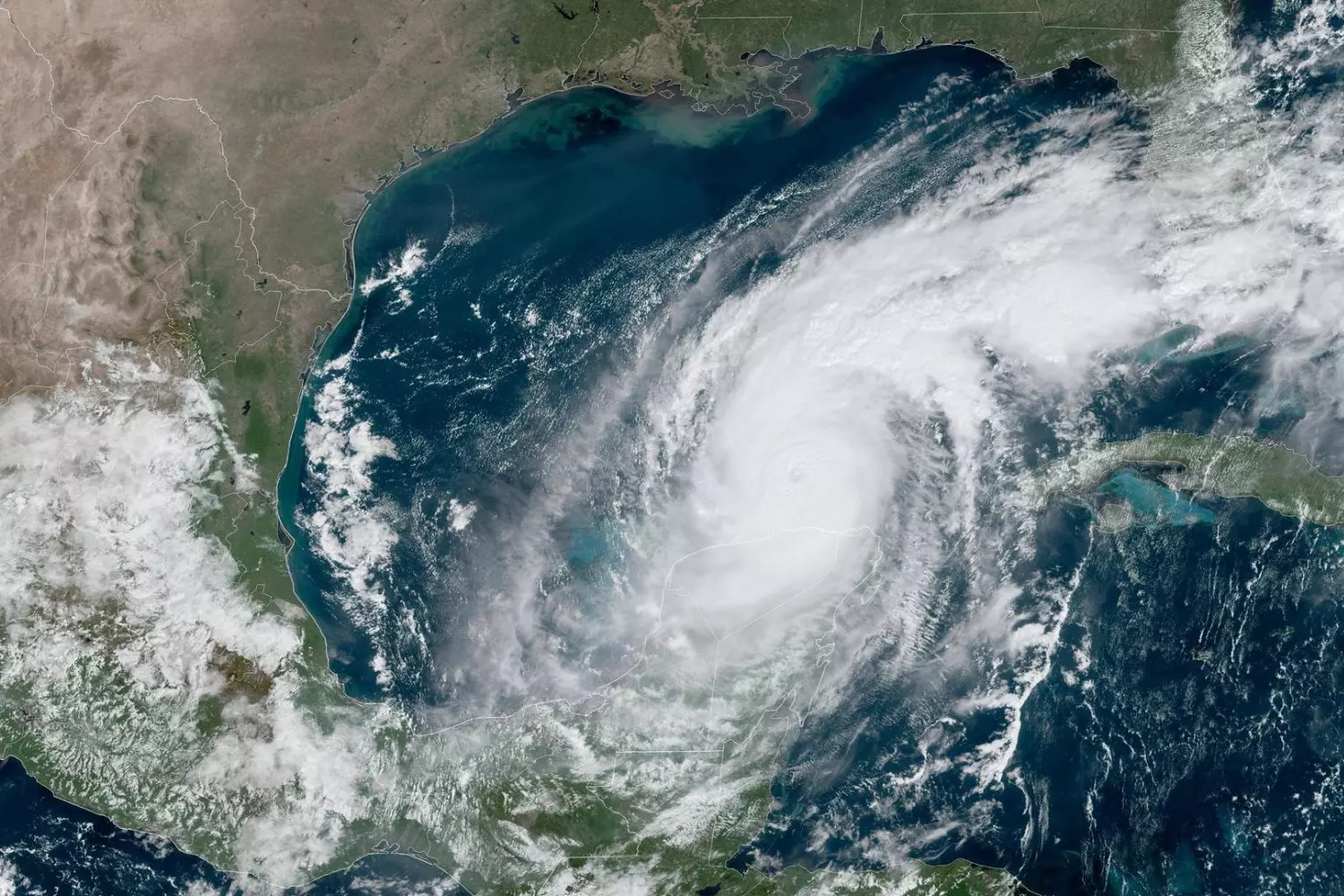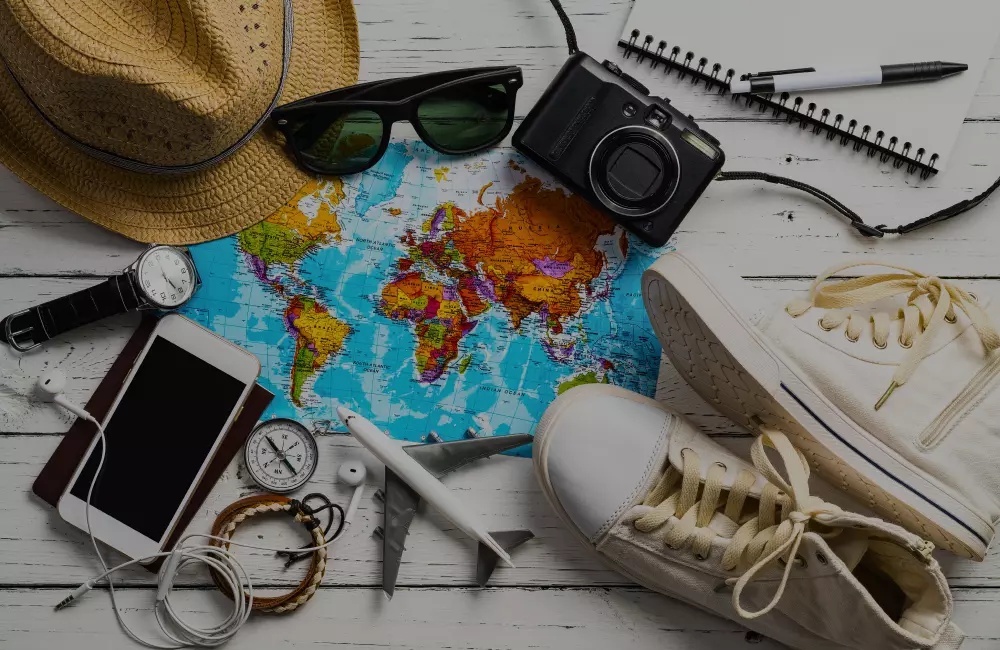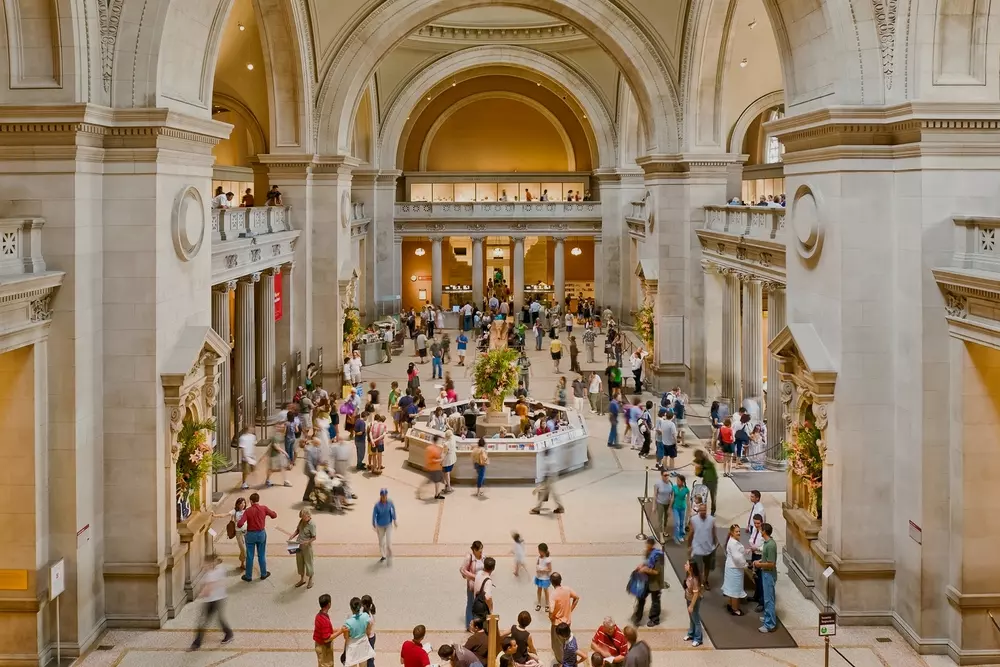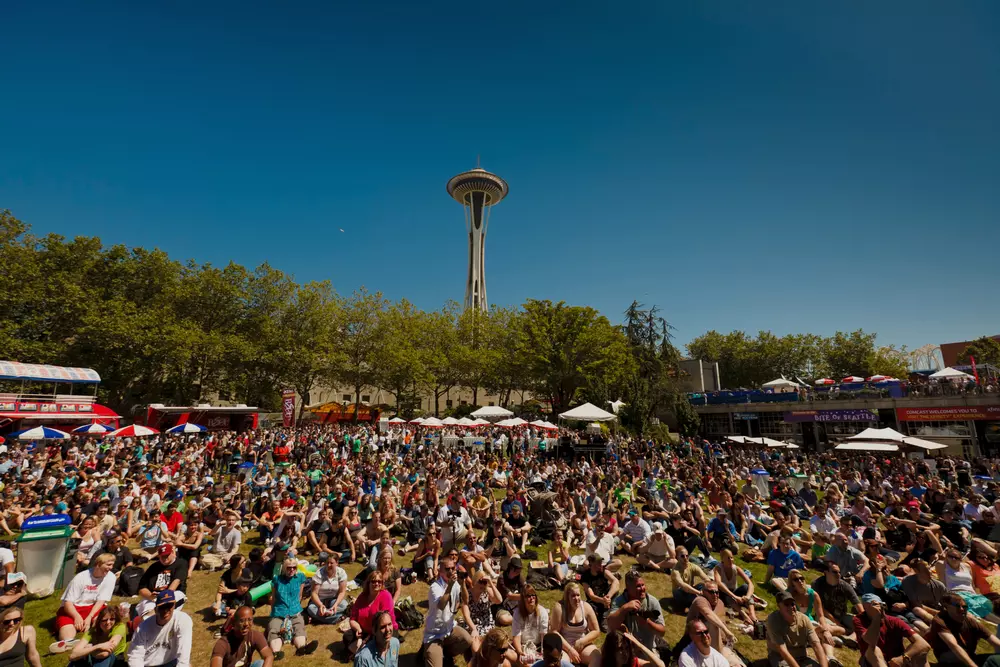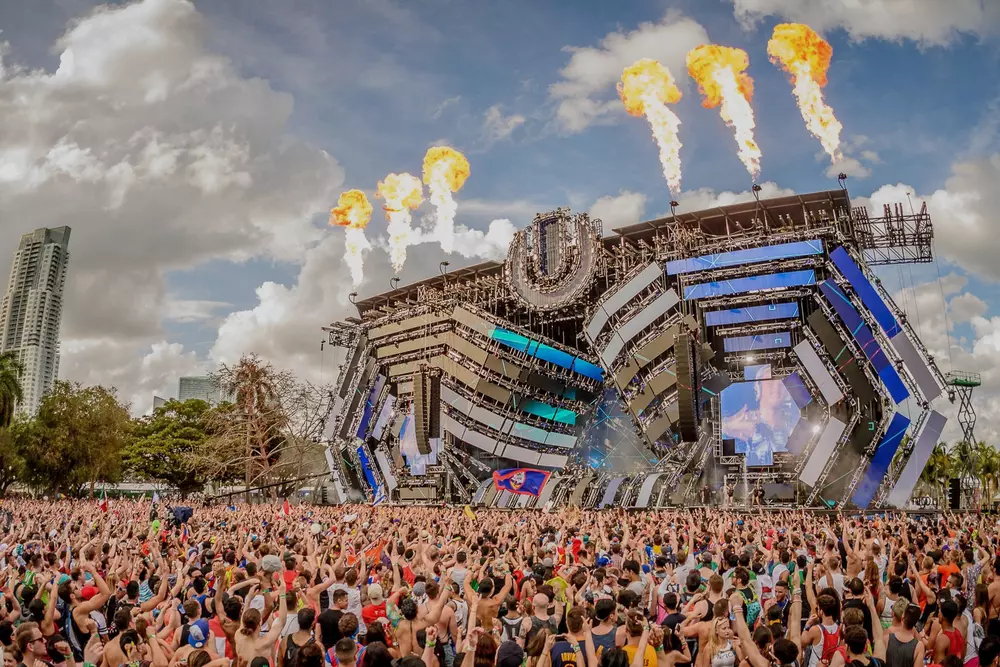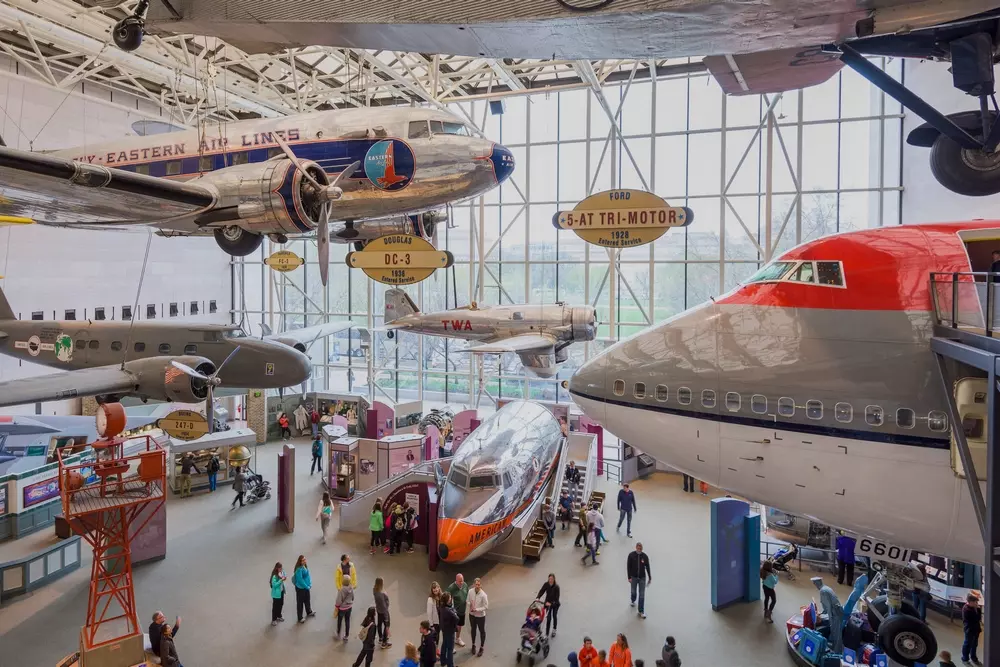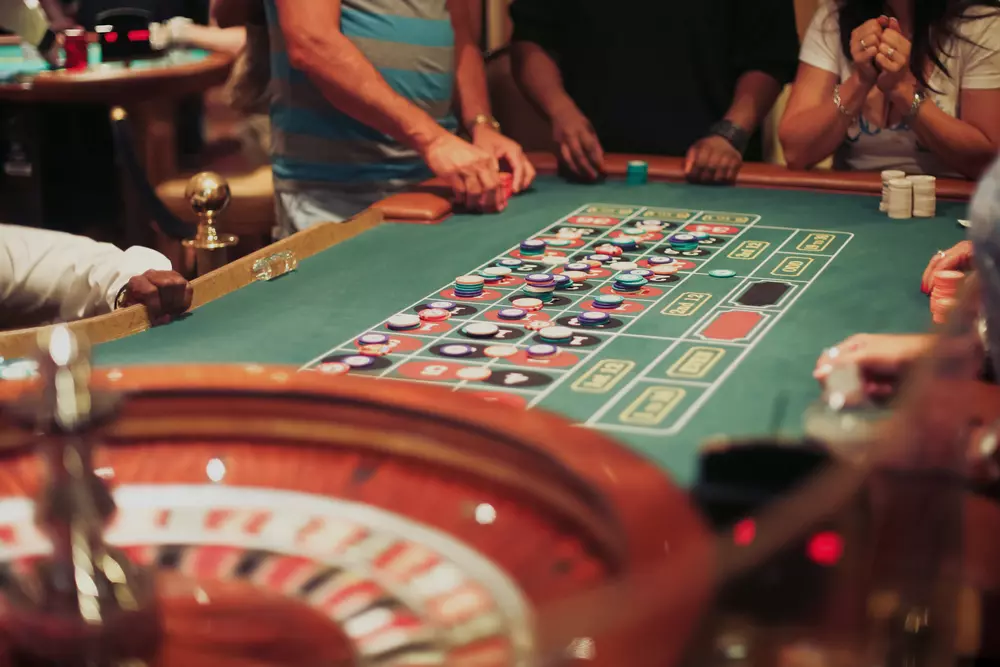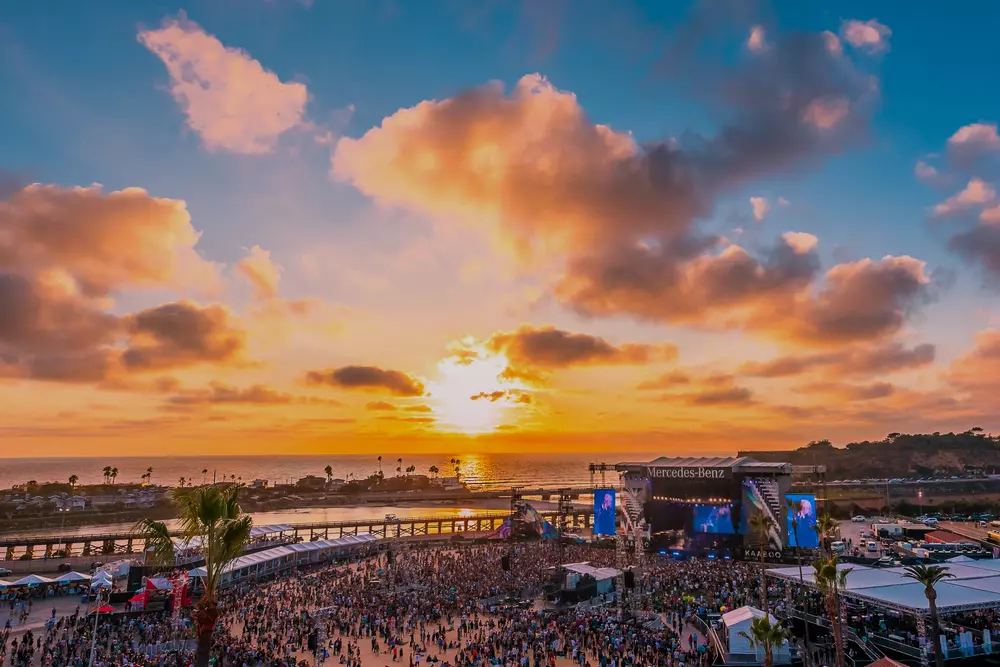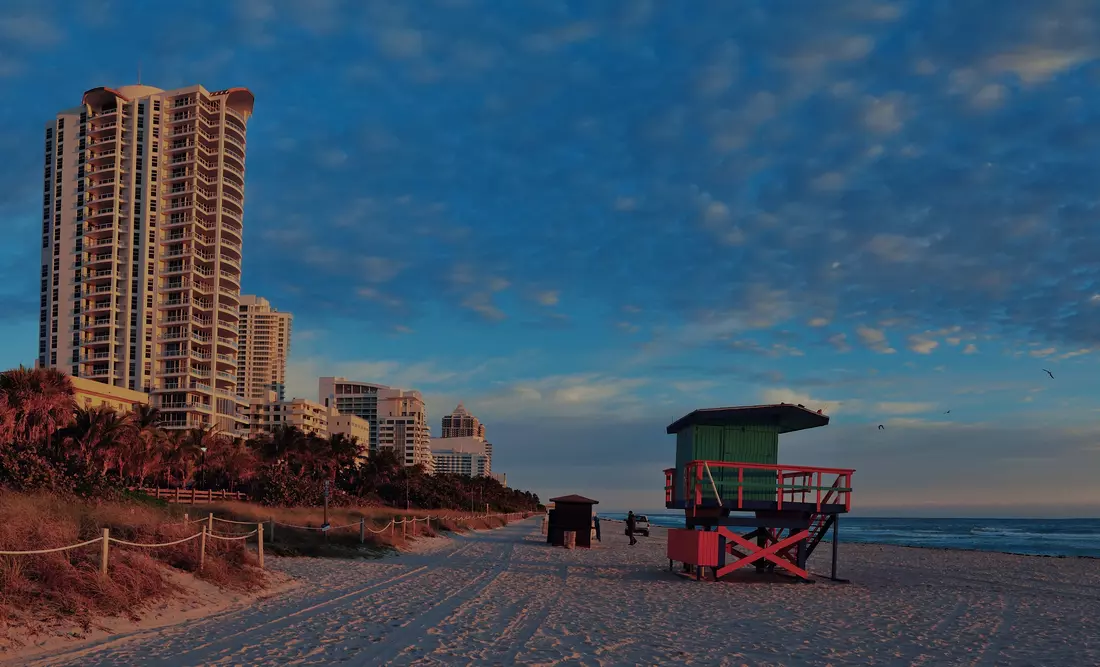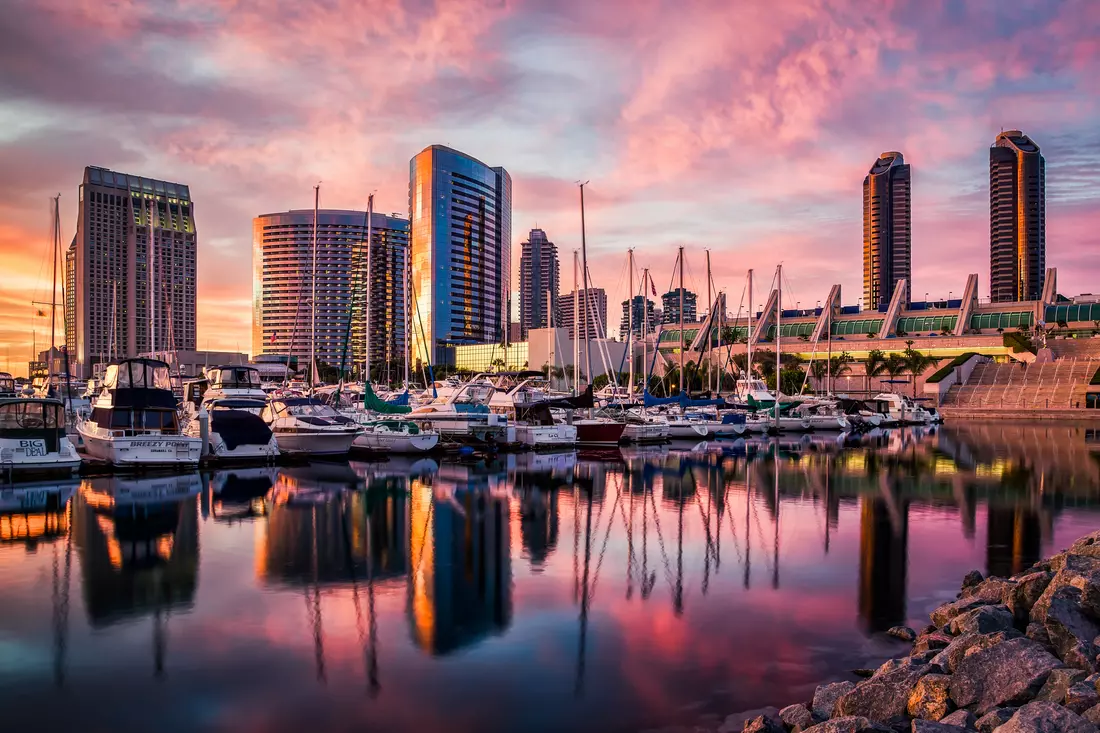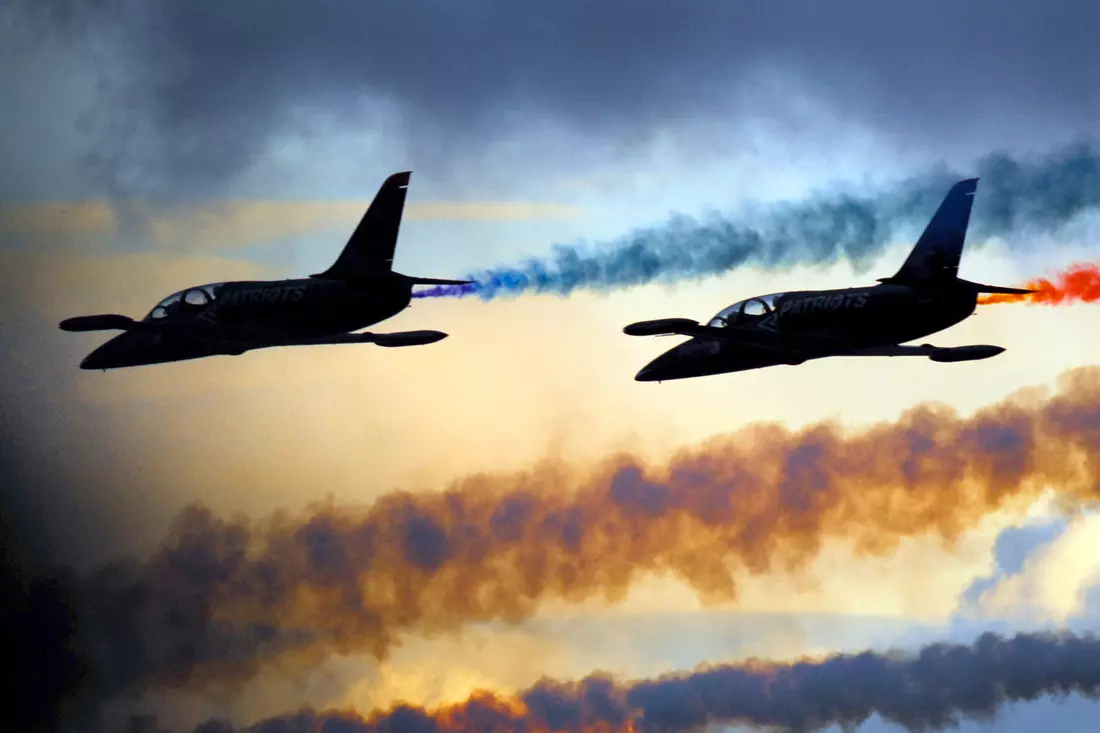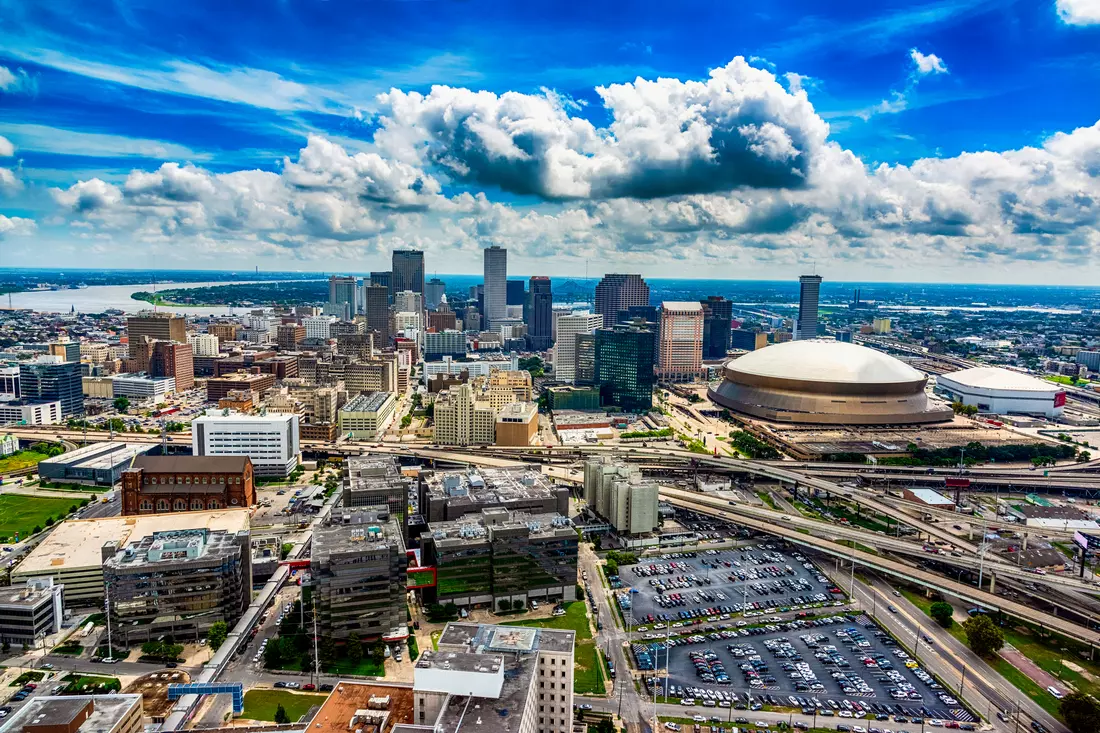The USA is a country not only of skyscrapers and Hollywood, but also of remarkable religious diversity.
America is the land of freedom. And this becomes especially evident when it comes to faith. No one here will judge you for being Catholic or Muslim, Hindu or Buddhist. In fact, if you don’t identify with any religion at all, that’s perfectly normal too. In the U.S., religion isn’t a duty — it’s a personal choice, guided by one’s beliefs, family traditions, or simply an inner search.
At first glance, religion might seem like a deeply private matter. But in America, it runs through everything: politics, education, art, even marketing. Here, faith lives not just in temples, but in everyday life — on TV shows, billboards, songs, and the streets.
The U.S. Constitution was one of the first documents in the world to enshrine the principle of freedom of religion. This means the government does not tell citizens what to believe in, but rather protects their right to choose their own spiritual path. Behind this seemingly simple right lies a complex mosaic — from traditional Protestants to neo-pagans, from Orthodox Christians to members of new religious movements. Every path here finds a place under the sun.
But this story isn’t just about denominations. It’s about how religion in the U.S. has become a cultural code — a part of national identity and social dynamics. You can’t truly understand America without understanding what it believes in.
The dollar bill bears the motto 'In God We Trust' — officially adopted in 1956 at the height of the Cold War as a deliberate contrast to atheistic USSR. This speaks volumes about religion's role in American identity.
Freedom of religion isn’t just words — it’s a constitutional right
Before diving into the details, let’s take a look at the numbers:
- ~70% of Americans identify as Christians (Pew Research Center).
- 28% do not affiliate with any religion ("nones" – atheists, agnostics, spiritual but not religious).
- Islam, Judaism, Buddhism, and Hinduism together account for about 6% of the population.
Did you know that Mormons (The Church of Jesus Christ of Latter-day Saints) represent one of the few religions that originated in the U.S.? Its founder, Joseph Smith, claimed to have received a revelation from the angel Moroni in New York State in the 1820s.
The First Amendment to the U.S. Constitution declares: "Congress shall make no law respecting an establishment of religion, or prohibiting the free exercise thereof." This short yet powerful phrase became the cornerstone of the American approach to religious freedom.
Formally, church and state are “separated” here: the government cannot establish an official religion or interfere with religious practice. But in practice, religion is everywhere — on the streets, in politics, in school debates, and even in sports.
For example, schools may host voluntary prayer groups, and judges or politicians often take oaths on the Bible. Military chaplains serve in all branches of the armed forces and play a vital role in the spiritual support of soldiers. You might see a priest blessing troops before deployment, or encounter Mormons in white shirts and name tags walking the streets on their missionary journey.
Religion is not silenced — it is actively woven into the fabric of public life. And that’s one of the unique things about America: you can be deeply religious, a staunch atheist, or simply a seeker — and all of it will be respected by society.
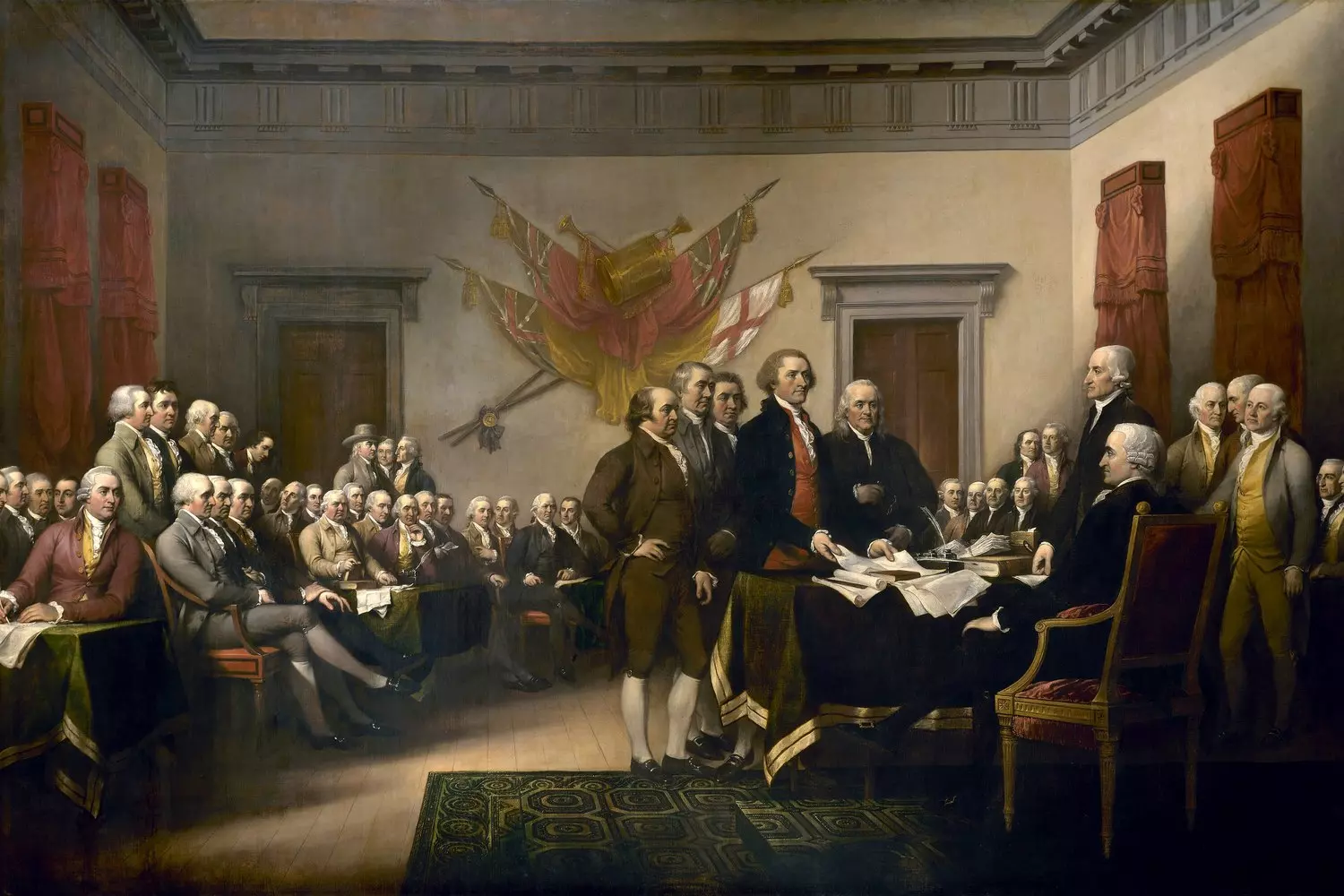
Major religions in the USA: who believes in what
The United States is one of the most religiously diverse countries in the world. According to recent Pew Research Center surveys, the country’s religious landscape looks as follows:
- Protestants
About 40% of the population. This is the largest group, including many denominations: Baptists, Methodists, Presbyterians, Pentecostals, and especially Evangelicals. - Catholics
Roughly 20% of Americans. Particularly concentrated in states with large immigrant populations from Latin America and Europe, such as California, New Mexico, and Massachusetts. - Jews
About 2%, yet they play a significant cultural and political role, especially in New York, Chicago, and Los Angeles. - Muslims
1–2%, and one of the fastest-growing groups due to immigration and high birth rates. - Buddhists and Hindus
Together make up about 1–2%, primarily concentrated in major cities and university hubs. - Other religions
Sikhs, Baháʼís, Mormons, Jehovah’s Witnesses, neo-pagans, and others — about 3%. - Unaffiliated (atheists, agnostics, “nothing in particular”)
Now over 28%. This number continues to grow, especially among the youth and in large cities.
This picture reflects not only freedom of choice but also a constantly shifting religious dynamic in a country where spiritual searching is part of both public and personal dialogue. Let’s take a closer look at the major denominations.
- 01. Protestantism — the religion of the “Founding Fathers”
The first settlers, the Puritans, brought with them a strict version of Christianity. This is the most widespread branch of Christianity, encompassing about 40% of the population. Protestant communities are diverse:
- Baptists emphasize personal faith, adult baptism, and church autonomy.
- Methodists are known for their social activism and pursuit of a “holy life.”
- Presbyterians adhere to strict theological traditions and governance by elders.
- Evangelicals are the most dynamic group, actively using media, missions, and public worship. Their focus is on a personal relationship with Jesus Christ, often expressed through emotional preaching.
- 02. Catholicism
The second largest denomination, encompassing about 20% of Americans — mostly descendants of Irish, Italian, and Latin American immigrants. Known for its centralized structure, veneration of saints, sacraments, and liturgical worship. Strong traditions include celebrations of Christmas, Easter, and rites such as confirmation and first communion.
- One in six Americans is Catholic.
- John F. Kennedy became the first Catholic president in 1960.
- 03. Judaism
About 2% of the population. Traditionally strong in major cities where conservative, reform, and orthodox communities are centered. Synagogues, Torah study, kosher dietary laws, and holidays like Yom Kippur, Hanukkah, and Passover are of great importance. New York City is home to the world’s largest Jewish diaspora outside Israel. - 04. Islam
About 1–2%, but rapidly growing. American Muslims include both Sunnis and Shiites, with diverse ethnic backgrounds: Arabs, African Americans, and South Asians. Key elements include the Five Pillars of Islam, prayer five times a day, and fasting during Ramadan. The first mosque in the U.S. was established in 1929 in North Dakota. - 05. Buddhism and Hinduism
Each accounting for about 1% of the population:
- Buddhists follow the teachings of the Buddha on the path to enlightenment, practice meditation, and celebrate Vesak (Buddha’s birthday).
- Hindus worship many deities, perform puja rituals, celebrate festivals like Diwali, and actively develop spiritual centers and ashrams.
- 06. Atheists, agnostics, and the unaffiliated
Now over 28%. This is the fastest-growing category, especially among young people and in metropolitan areas. These individuals often describe themselves as “spiritual but not religious,” focusing on personal morality, philosophy, and science.
Orthodoxy in the U.S.: History, Communities, and Traditions
Orthodoxy is one of the oldest branches of Christianity, which came to the U.S. with waves of immigration starting in the late 19th century. Today, Orthodox Christians make up a small but influential part of American society. While not as numerous as Protestants or Catholics, their communities play an important role in the country’s cultural and spiritual life.
According to the Pew Research Center, Orthodox Christians account for about 0.5% of the U.S. Christian population, or around 3–4 million people. Most American Orthodox Christians are descendants of immigrants from Eastern Europe, Greece, the Middle East, as well as Russians, Serbs, Ukrainians, and Armenians. Orthodox communities are often concentrated in large cities such as New York, Chicago, Los Angeles, and Detroit, and in areas with strong immigrant traditions.
- Orthodox communities in the U.S. often maintain close ties to their countries of origin, reflected in cultural events, holidays, and language traditions. In some communities, services are held in Church Slavonic or Greek, and national celebrations such as Christmas and Easter are observed according to the Orthodox calendar.
- Many churches run outreach programs to help those in need — both within the church and in the broader community. Educational and cultural programs are well developed, including spiritual courses and schools for children.
- Orthodox churches in the U.S., like their counterparts worldwide, adhere to ancient traditions and rituals, preserving liturgy, art, and ecclesiastical structures inherited from Byzantine and Slavic Orthodoxy. Services are solemn and deeply symbolic, featuring icons, choral singing, incense, and candles.
However, Orthodox Christians in the U.S. face several challenges. One is preserving the faith among younger generations, especially amid secularization and Western cultural influences. Youth sometimes feel disconnected from the traditions of their ancestors, leading to a decline in participation among younger parishioners.
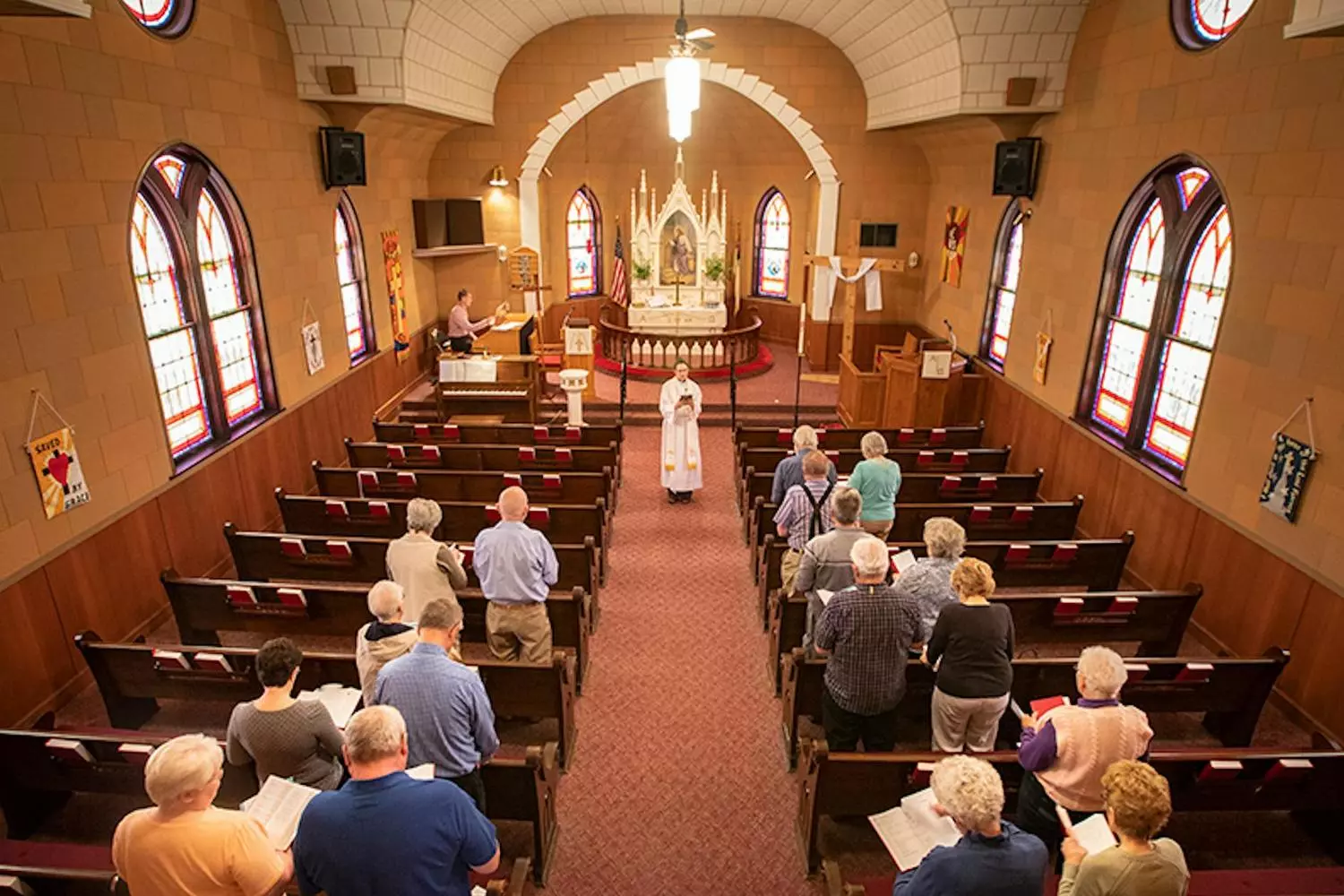
Minor Religious Groups in the United States
In the United States, not only major religions such as Christianity, Islam, and Judaism play a significant role. The country is home to a wide variety of religious movements and denominations that, although small in number, nonetheless have a noticeable impact on public life and culture. Some of these religions have gained worldwide recognition despite their relatively small presence in the U.S.
- 01.Mormons: A Religious Community with Unique Beliefs
Mormons, or members of the Church of Jesus Christ of Latter-day Saints, form a small yet highly visible religious group in the U.S. Founded in the early 19th century by Joseph Smith, the Mormon Church today counts millions of followers around the world, with a strong concentration in the state of Utah. Mormons believe in the Bible but also consider the Book of Mormon, written by Smith, to be an additional sacred text. This religion is known for its unique views on history, salvation, and community life. Mormons are recognized for their strict adherence to moral standards, abstinence from alcohol, coffee, and tobacco, and strong emphasis on family values. - 02.Amish: A Traditional Lifestyle and Deep Religious Beliefs
The Amish are a religious group that follows strict principles of simplicity and avoidance of modern technology. This community, primarily made up of descendants of German and Swiss immigrants, is known for its isolation from mainstream society and minimal use of technology such as cars, electronics, and even phones. The Amish aim to preserve traditions rooted in the 17th century and place a high value on peaceful, hardworking lives free from outside influences. Amish communities can be found across the U.S., particularly in Pennsylvania, Ohio, and Indiana. - 03.Hare Krishnas: Followers of the Cult of Sri Krishna
Krishnaism, or the International Society for Krishna Consciousness (ISKCON), emerged in the U.S. during the 1960s. Its followers worship Sri Krishna as God and promote teachings of love, compassion, and the pursuit of spiritual enlightenment through meditation, prayer, and devotional service. Although Hare Krishnas are popular in certain cultural circles, such as in New York City and along the California coast, their religious practices and lifestyle remain distinct. They are known for their bright orange clothing, dancing and chanting, as well as charitable initiatives and vegetarian way of life. - 04.Scientologists: A Belief in a Scientific Approach to Spiritual Development
The Church of Scientology, founded by writer L. Ron Hubbard in 1954, is a religious movement that claims spiritual enlightenment can be achieved through the study and application of scientific principles. Scientologists believe that each person has a “thetan”—an immortal soul that can be cleared of “engrams” (mental blockages) through a therapeutic process called auditing. This religion has faced strong criticism for its recruitment methods and high financial demands. Nevertheless, it maintains a significant number of active followers around the world, including celebrities such as Tom Cruise. - 05.Church of Satan: An Alternative Take on Religion
The Church of Satan, founded in 1966 by Anton LaVey, offers a radically different view of religious life. LaVeyan Satanism is a philosophy centered on individualism, free thought, and self-improvement. Unlike traditional religions, the church does not worship Satan as a deity but uses his image as a symbol of freedom, power, and resistance to authoritarianism. Members of the Church of Satan actively promote atheist and humanist views, as well as a belief in personal responsibility and egoism as key life principles. - 06.Other Religious Movements
In addition to the aforementioned movements, the U.S. is home to many other, lesser-known religious groups. These include, for example, Sikhs, Baháʼís, and followers of new religious movements. Many of these groups advocate for freedom of belief, the development of personal spiritual practices, and minority rights. While some of these communities may be rather closed off and less publicly active, they still contribute to the country’s rich religious diversity.
Despite their minority status in society, many of these movements have devoted followers and continue to attract new adherents. In the U.S., freedom of religion is guaranteed by the Constitution, allowing even the most unconventional religious groups to exist and grow within the framework of the country’s laws and traditions.
Thus, despite the dominance of major religious traditions such as Christianity, Islam, and Judaism, America is also the birthplace of numerous unique religious movements, each adding to the nation’s vibrant spiritual diversity.
Fun fact:
In Las Vegas, there's an Elvis church where couples can get married to the songs of "The King."
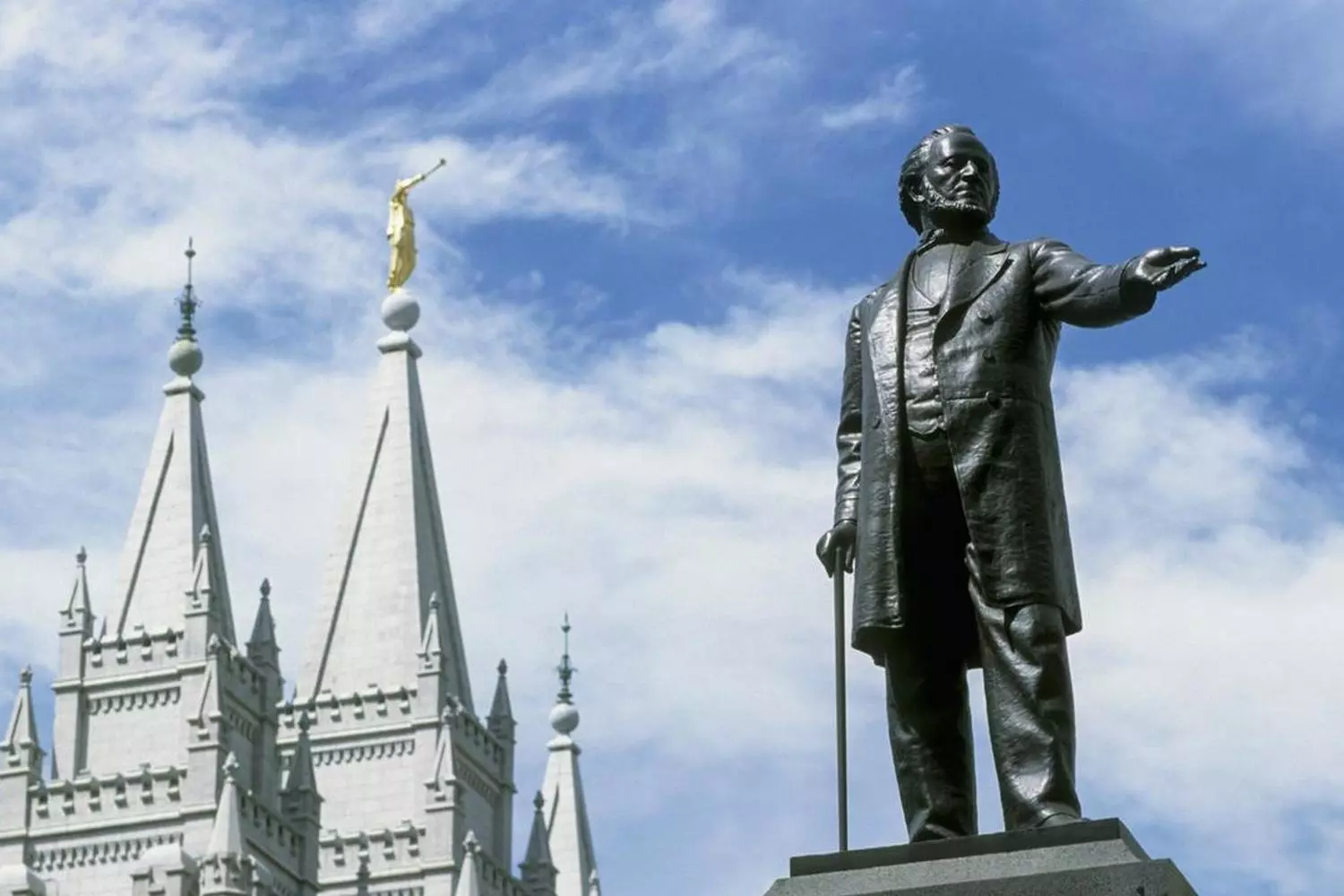
Religion and Politics: A Union Without a Formal Marriage
Although church and state are legally separated in the United States, religion remains an important factor in politics and public life. Historically, American presidents — from Abraham Lincoln to Joe Biden — have openly professed their faith. This is not merely symbolic: religious beliefs shape political agendas, influence the electorate, and are reflected in decisions at the highest levels.
The “Moral Majority” movement in the 1980s played a key role in the election of Ronald Reagan, uniting conservative Protestants. Today, evangelicals — especially in the southern states, known as the “Bible Belt” — remain a powerful political force, actively supporting specific parties and legislative initiatives.
Politicians regularly attend prayer breakfasts, visit megachurches, and eagerly quote Scripture in their speeches. Even debates over minority rights, abortion, or freedom of speech are often colored by religious tones. For many voters, a candidate’s faith matters as much as their platform. Every American leader must navigate the balance between a secular government and religious voters:
- Swearing in on the Bible — a tradition since George Washington
- 45% of Americans would not vote for an atheist (Pew Research)
A striking example: In 2020, 81% of evangelicals voted for Trump, viewing him as a “defender of Christian values.”
Religious beliefs also influence the adoption and structure of certain laws. For instance, some states have restrictions on abortion that are directly driven by religious values. “Blue laws” in certain jurisdictions limit commerce and alcohol sales on Sundays — a day traditionally reserved for rest and worship.
- Opposition to abortion (Protestant evangelicals)
- Resistance to LGBTQ marriages (Catholics and Mormons)
- Support for Israel (Jewish organizations)
Additionally, religious groups lobby for legislation on issues such as family, education, bans on euthanasia, and the preservation of traditional marriage. Sometimes, this leads to conflict with the principles of a secular state, but this is precisely how freedom of speech and the right to participate in public life are realized in the U.S. — for all segments of the population, including religious communities.

Faith and Celebration: Religious Holidays in America
American culture is deeply infused with religious traditions, which is especially evident in its holiday calendar. Despite the secular nature of the state, many religious dates are recognized as official public holidays or widely celebrated on a cultural level. Even those who do not adhere to any faith often participate in the festivities — as a way to gather with family, express gratitude, or simply feel a sense of community.
Many religious holidays in the U.S. not only preserve cultural continuity but also serve as key elements of the country's multicultural mosaic. They range from festive Christmas parades to quiet days of atonement, from family meals on Easter to large-scale Iftar gatherings during Ramadan. Here are some of the most significant ones:
- Christmas
December 25. One of the most beloved holidays in the U.S. Celebrated not only by believers but also by secular citizens. Decorated homes, gift exchanges, Christmas carols, and the cult of Santa Claus have become an integral part of the American winter. For Christians, it marks the birth of Jesus Christ, observed with church services, Christmas Eve traditions, and special meals. - Easter
A moveable spring holiday and one of the most important for Christians. It symbolizes the resurrection of Christ. In the U.S., it is celebrated not only with religious services but also with popular customs: Easter egg hunts, basket decorating, baked treats, and games for children. The Easter Bunny and dyed eggs are iconic symbols of the secular celebration. - Yom Kippur and Rosh Hashanah
The most important dates in Judaism. Rosh Hashanah (Jewish New Year) marks the beginning of the Ten Days of Repentance, culminating in Yom Kippur — the Day of Atonement. During these days, Jewish communities across the U.S. gather for prayers, introspection, forgiveness, and spiritual cleansing. In New York, home to the largest Jewish diaspora, these holidays are especially prominent and even affect school and business schedules. - Ramadan and Eid al-Fitr
The most important holidays on the Muslim calendar. During Ramadan, Muslims fast from dawn to sunset, focus on spirituality, charity, and prayer. Eid al-Fitr (Festival of Breaking the Fast) marks the joyful end of the fasting month, featuring festive prayers, family meals, charity, and gift-giving. In many U.S. cities, public Iftar gatherings take place with participation from both Muslims and non-Muslims. - Diwali and Vesak
Hindu and Buddhist holidays actively celebrated in America's diverse communities. Diwali — the Festival of Lights — symbolizes the triumph of light over darkness. It involves lighting lamps, fireworks, sharing sweets, and family prayers. Widely observed in Indian communities in New York, Chicago, and San Francisco. Vesak — the birthday of Buddha. Buddhists in the U.S. gather in temples, make offerings, listen to teachings, and take part in peaceful processions and meditations. In major Buddhist centers, this day becomes a true cultural festival.
These holidays are more than just dates on a calendar. They reflect the faith, traditions, and cultural diversity of American society, where everyone can find their place and be heard.
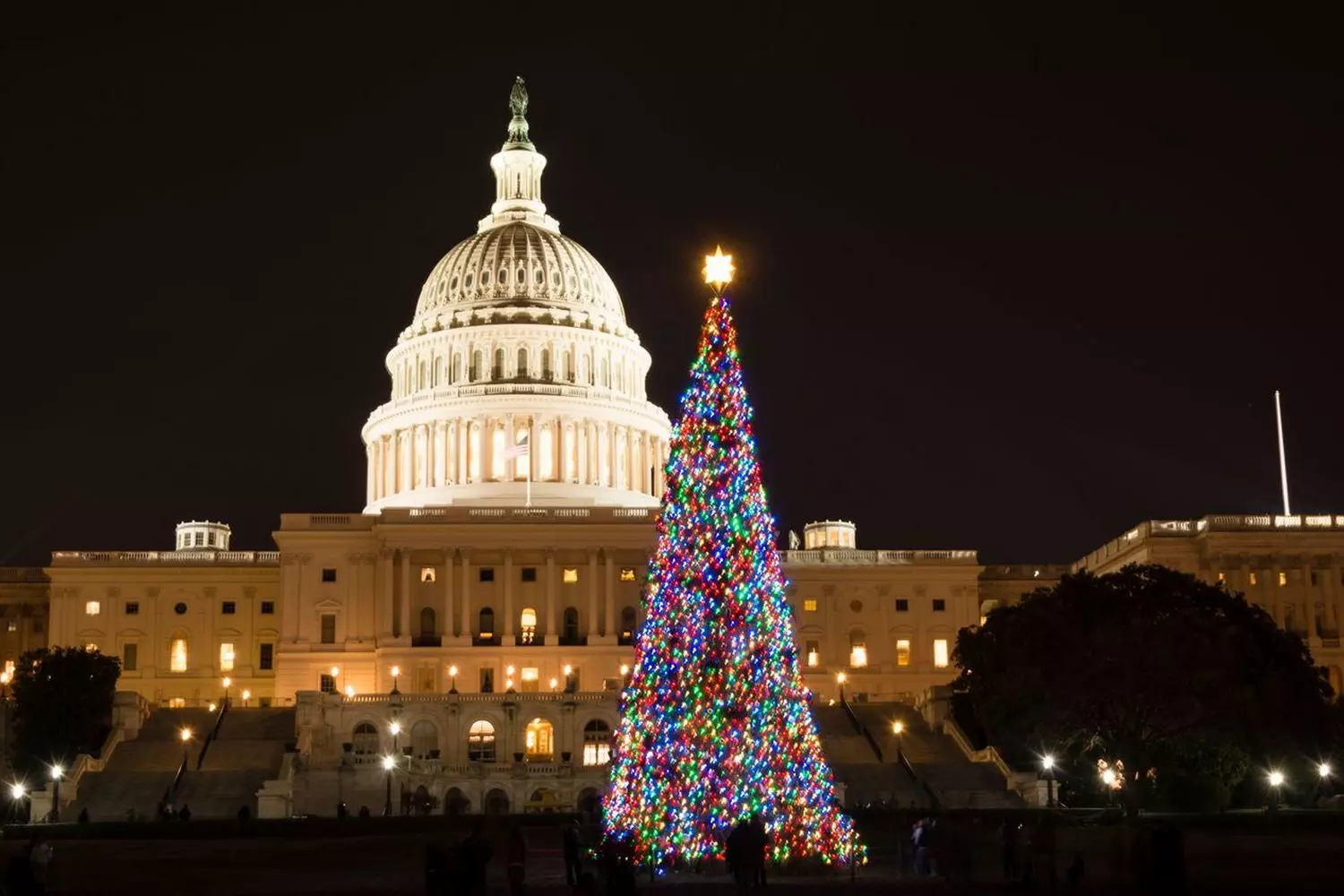
Understanding the USA's Climate: Zone Map, Weather Specifics, and Travel Tips
Religion in Education: Walking a Fine Line
American schools are not allowed to promote any religion due to the First Amendment to the Constitution, which prohibits the establishment of a state religion. However, in some states, students are permitted to pray or read sacred texts as long as it is done voluntarily and does not infringe on the rights of others.
At the same time, private religious schools — Catholic, Protestant, Jewish, Muslim, and others — are widespread across the U.S. Catholic schools are especially popular, with around two million children enrolled nationwide. These institutions combine academic rigor with spiritual development, regular Mass attendance, and the study of religious subjects. Many of them are known for their high educational standards: graduates often go on to attend prestigious universities.
- 10% of American children attend religious schools
- The debate over teaching the theory of evolution has continued since the 1925 "Scopes Monkey Trial"
- In 2022, Texas proposed displaying "In God We Trust" in every classroom
Catholic schools are valued for their discipline, small class sizes, personalized approach, and strong community. Although tuition-based, many families consider the religious aspect and high-quality education to be worth the investment. These schools are often open to students of other faiths — or even non-religious families — while presenting religious content in a respectful and non-coercive manner.
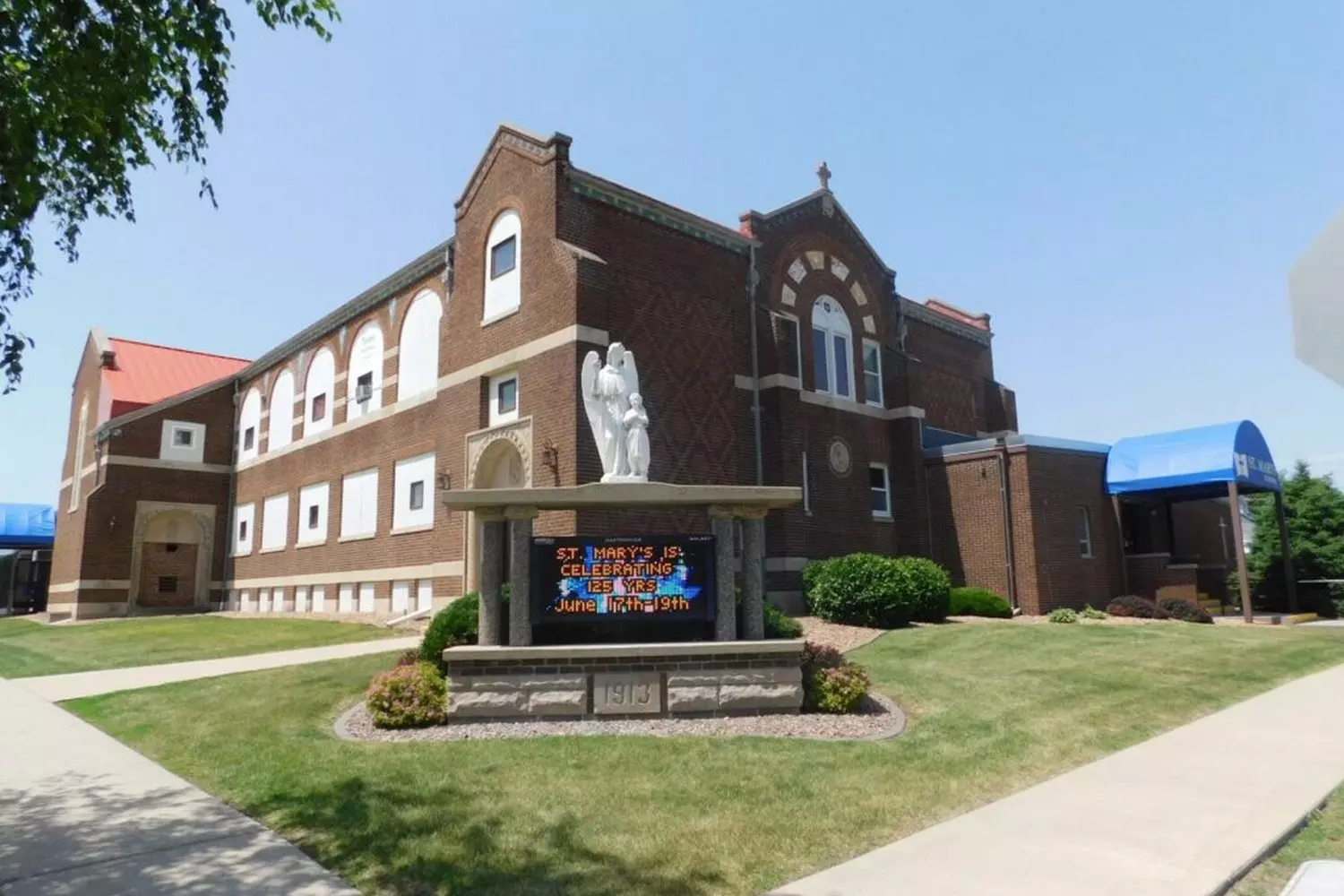
Religious Liberty in Immigrant Communities
When it comes to the United States, immigrants often note that freedom of religion plays a key role in their decision to move to the country. America is a place where religious beliefs and practices can be expressed openly, without fear of persecution. This is especially important for people who have faced restrictions in this area in their home countries.
- In the U.S., unlike many other countries, citizens are not only allowed to practice their religion but also to form religious communities, build churches, mosques, synagogues, and other places of worship. This allows religious minorities to actively grow and preserve their traditions, creating support for their culture and faith in a new country. For many immigrants, this aspect is crucial, as it enables them to continue living in accordance with their beliefs while being part of an inclusive society that upholds freedom of religion.
- In the U.S., religious services and rituals can be conducted in the community’s native language. This is especially valuable for those who have just arrived and are facing language barriers. For example, Muslims may pray in Arabic, Catholics in Spanish, and Jews in Hebrew. Such freedom allows people not only to maintain a connection with their cultural roots but also to actively participate in the broader American community.
- Religion in the U.S. also offers immigrants a unique opportunity to integrate into society without giving up their traditions. In a country where religious freedom is protected, each individual can simultaneously be a part of their faith community and of the broader American culture.

Faith-Based Travel in America
The United States is a popular destination for religious tourism due to the diversity of faiths and traditions present in the country. Each of the places mentioned below is not just a tourist attraction but a significant site for followers of the respective religions and cultures.
- St. Patrick’s Cathedral in New York City
This is one of the most famous Catholic churches in the world. Built in Gothic style, the cathedral is not only a religious center but also an architectural and cultural icon. It hosts major masses, including Christmas and Easter celebrations. The cathedral also draws tourists with its rich history, grandeur, and atmospheric beauty. - The Mormon Temple in Salt Lake City
A major religious and cultural center for members of The Church of Jesus Christ of Latter-day Saints (Mormons). The temple is not only a symbol of faith but also an architectural gem that attracts thousands of pilgrims and tourists. Visiting this place offers deep insight into the history of Mormonism and its significance in American culture. - Churches of New Orleans with elements of Voodoo culture
New Orleans is known for its unique atmosphere that blends elements of Catholicism and Voodoo. Voodoo as a religious practice came to the U.S. with African slaves and still holds significant influence in the city's culture. Many churches and temples in New Orleans offer tours that immerse visitors in the mysticism and magic typical of the region. - The Amish community in Pennsylvania
The Amish are known for rejecting modern technology and living according to traditional Christian values. Pennsylvania is a place where visitors can explore these communities, interact with locals, and learn about their lifestyle, which differs greatly from mainstream American culture. The Amish lead a simple, almost medieval way of life, attracting many tourists eager to understand their unique culture. - Jewish museums and memorials in New York and Washington, D.C.
New York and Washington are home to important cultural and religious landmarks for the Jewish community. Museums such as the Holocaust Memorial in Washington, D.C. and the Jewish Museum in New York serve not only as historical monuments but also as places that tell the story of the Jewish people, their culture, and their struggle for survival during difficult historical periods.
These and many other sites across the U.S. create unique opportunities for religious tourism, where each visitor can not only enjoy the historical and architectural significance but also gain a deeper understanding of the spiritual traditions and beliefs of diverse cultures.
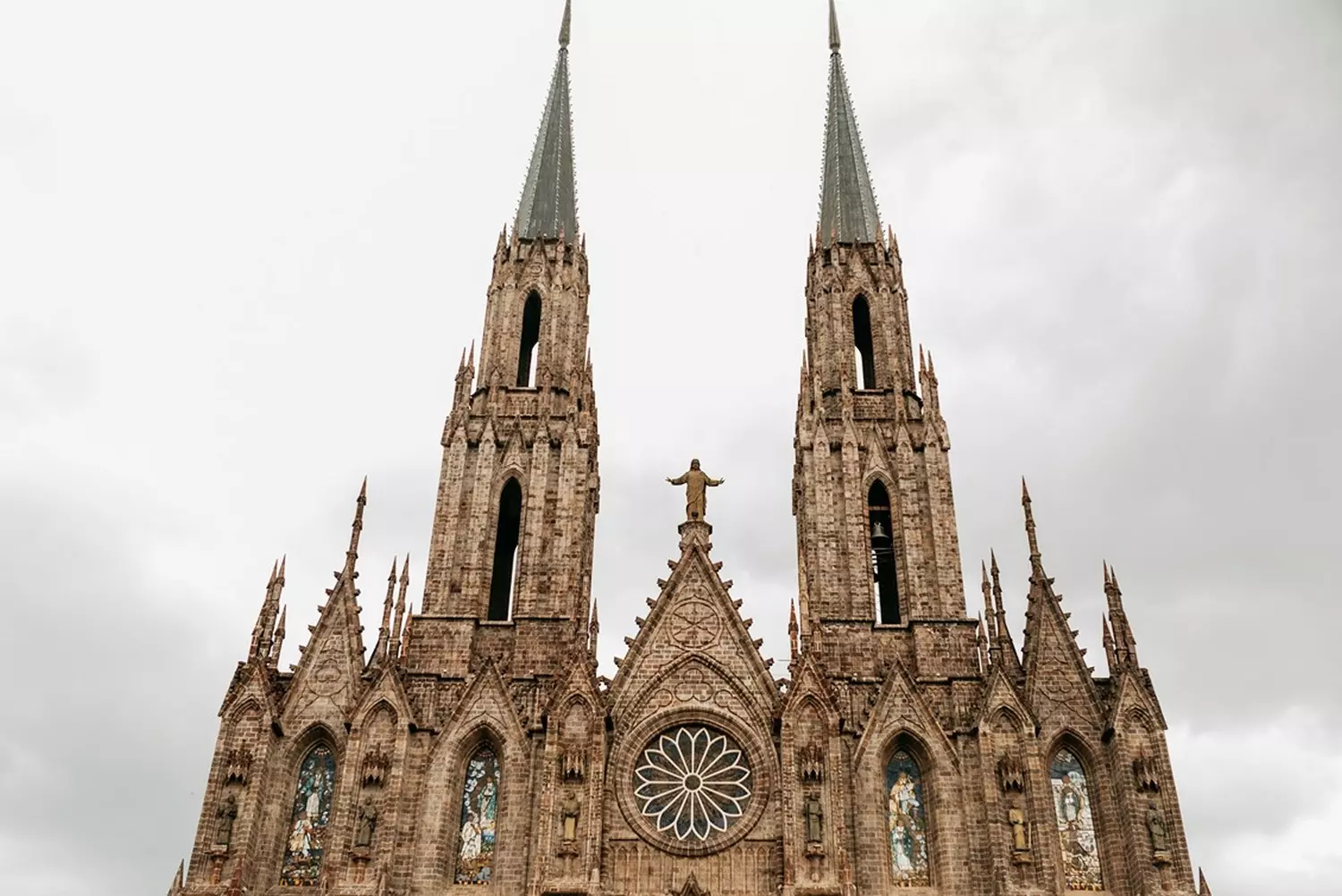
How Religion Shapes American Lives
Religion has a noticeable impact on everyday life in the United States. Many people actively participate in religious services, and attending church is an important part of their routine. Participation in services can be weekly or associated with significant religious holidays and events. Every Sunday, countless believers across the U.S. attend church services. This tradition is deeply rooted in American society, especially among Protestants and Catholics. In some communities — particularly in the Southern states — attending services is considered an essential part of social life and a way to affirm one's belonging to a religious community.
- Many believers also take part in additional prayer groups held on weekdays. These gatherings often take place in homes or church buildings and involve prayer, discussions, and conversations on religious topics. For some people, such meetings are not only a way to strengthen their faith but also an opportunity to build friendships with like-minded individuals.
- A key element of religious practice for many is attending services on special religious days such as Christmas, Easter, Yom Kippur, or Ramadan. These services often include prayers, hymns, and rituals that help worshippers immerse themselves in an atmosphere of sacredness and spirituality.
- It's also worth noting that religion in the U.S. is closely tied to the concept of "community." This means that people often attend the same church regularly and actively engage in community life, allowing them to deepen their faith while being part of a supportive network. Many churches organize charity events where believers can help those in need and participate in social initiatives, further strengthening the bonds among members of the religious community.
The Bible Belt: The Most Religious States and Their Influence
The term “Bible Belt” refers to regions in the United States where religious traditions — especially Protestant — are particularly strong. In these states, religion typically plays a central role in daily life, and the majority of residents actively practice their faith. These areas are known for high church attendance, regular religious events, and a strong influence of religion on politics and culture.
The Bible Belt encompasses the Southern and some Central U.S. states. Although definitions vary, the core states in this region typically include Texas, Missouri, Arkansas, Louisiana, Tennessee, Kentucky, Alabama, South Carolina, Georgia, and others. These areas are home to many people who openly express their faith and consider it an important part of their identity.
- The region gets its name from the strong presence of Protestant denominations — particularly evangelicals, Baptists, and Pentecostals — which are widely represented in these states. These religious traditions have a profound influence on local society and culture, from family values to political choices.
- One reason for the high level of religiosity is the historical role of the South in the development of Protestantism in America. Numerous evangelical communities were established in the 18th and 19th centuries, and these traditions remain deeply embedded in local life. Many early settlers — especially Protestant immigrants — came to the South seeking religious freedom. These roots continue to shape worldviews and everyday practices today.
- In the Bible Belt, religion permeates all aspects of life. Every Sunday, many residents attend church, where emotionally rich and vibrant services are held. A distinctive feature of the region is its intense form of worship, centered on passionate prayers, sermons, and singing. Protestant churches — especially evangelical and Baptist ones — are the main spiritual centers, with far-reaching influence on the broader community.
- The Bible Belt is also known for its strict moral norms. For example, some states have laws that ban alcohol sales on certain days, restrict abortion access, or prohibit same-sex marriage. These legislative initiatives are often backed by local religious communities, which play a major role in political life.
- Residents of the Bible Belt are known for their political activism, particularly on issues concerning religious and moral values. In these states, religious organizations hold significant sway in elections and advocate for legislation aligned with their beliefs. For instance, Protestant communities here often support conservative political parties and candidates who promise to uphold traditional family values.
The Bible Belt remains one of the most religious regions in the United States, where faith and spiritual practices significantly shape everyday life, culture, and politics. It is a place where religion plays a central role in society, influencing moral views, legislation, and shared values.

Megachurches and Televangelists
In the U.S., religion is not only a matter of faith — it's also a massive business, a form of pop culture, and a powerful social institution. This is most vividly seen in megachurches — giant religious centers that often resemble stadiums more than traditional churches.
Why are they so popular? Who attends them? And how are they changing the public's perception of Christianity? Let’s break it down.
Megachurch refers to a Protestant church with a weekly attendance of at least 2,000 people. But the real giants host anywhere from 10,000 to 50,000 worshippers!
Defining Features of Megachurches
- Huge auditoriums (often with LED screens and professional sound systems).
- Entertainment format — rock bands, theatrical performances, motivational sermons.
- Multimedia integration — livestreams, mobile apps, social media presence.
- Comprehensive services — daycare, gyms, cafes, even movie theaters.
The largest megachurch in the U.S. is Lakewood Church in Houston, Texas, led by Joel Osteen. Every Sunday, up to 52,000 people attend its services!
Why Are Megachurches So Popular?
- Religion as Entertainment
Modern Americans — especially younger generations — are not drawn to boring sermons. They want: live music (not hymns, but rock or R&B), dynamic speakers (pastors talk about careers, family, and money), and visual effects (lasers, smoke machines, video clips). - Social Engagement
A megachurch is like a social club. You can make friends, network, or enroll your child in extracurricular programs. - “Prosperity Gospel”
Many megachurches preach the prosperity gospel (“God wants you to be rich”). This message appeals to those dreaming of financial success.
Televangelists: Fame, Wealth, and Influence
Televangelists have become a key part of religious and cultural life in the U.S., blending preaching with entertainment and media savvy. With the rise of cable, satellite TV, and online platforms, these leaders have drawn millions of viewers, allowing them to spread their messages and amass considerable wealth.
- Televangelists typically lead Christian churches that broadcast their messages through mass media. One of the first and most successful was Rex Humbard, who launched his “Florida Ministry” TV program in the 1950s, followed by a dedicated channel. Today, televangelism is a defining feature of the evangelical landscape.
- Televangelists are immensely popular, especially among followers of evangelical and charismatic traditions. Their shows often include uplifting sermons, musical performances, personal testimonies of faith, and encourage viewers to donate to support their churches and TV ministries. Audiences range from hundreds of thousands to millions.
- A televangelist’s income often directly correlates with the popularity of their broadcasts and the generosity of their donors. Many have succeeded through efficient donation systems via television. This practice is known as “seed money” — pastors promise that giving to their ministry will bring material and spiritual blessings in return.
- Notable televangelists include Joel Osteen, Creflo Dollar, Benny Hinn, and T.D. Jakes. Their programs are broadcast worldwide, and donations can be made via phone, websites, or mobile apps. These leaders also earn substantial income from books, audio and video content, and branded merchandise.
Televangelists often live in significant wealth, which raises moral concerns about their practices. They reside in luxurious homes, drive expensive cars, own private jets, and host lavish events. For example, Joel Osteen, who leads one of the largest Protestant congregations in the U.S., claims that his church generates billions annually, and he is among the highest-paid pastors in the country.
Many of these pastors openly declare that their wealth is a result of God’s blessings and argue that money helps them spread the word of God globally. However, critics argue that their lavish lifestyles contradict core Christian values like humility and service to others.
Televangelists’ influence goes far beyond the church. They are significant figures in political and social life, especially among religious conservatives. Many support political parties and candidates aligned with their religious views — often backing Republicans, which amplifies the role of religion in American politics.
At the same time, televangelists play a role in charitable initiatives and social programs. They fund projects to support low-income families, promote traditional family values, and improve education — having a positive impact on communities. However, their actions also spark debate, particularly regarding the ethics and transparency of donation-based funding.
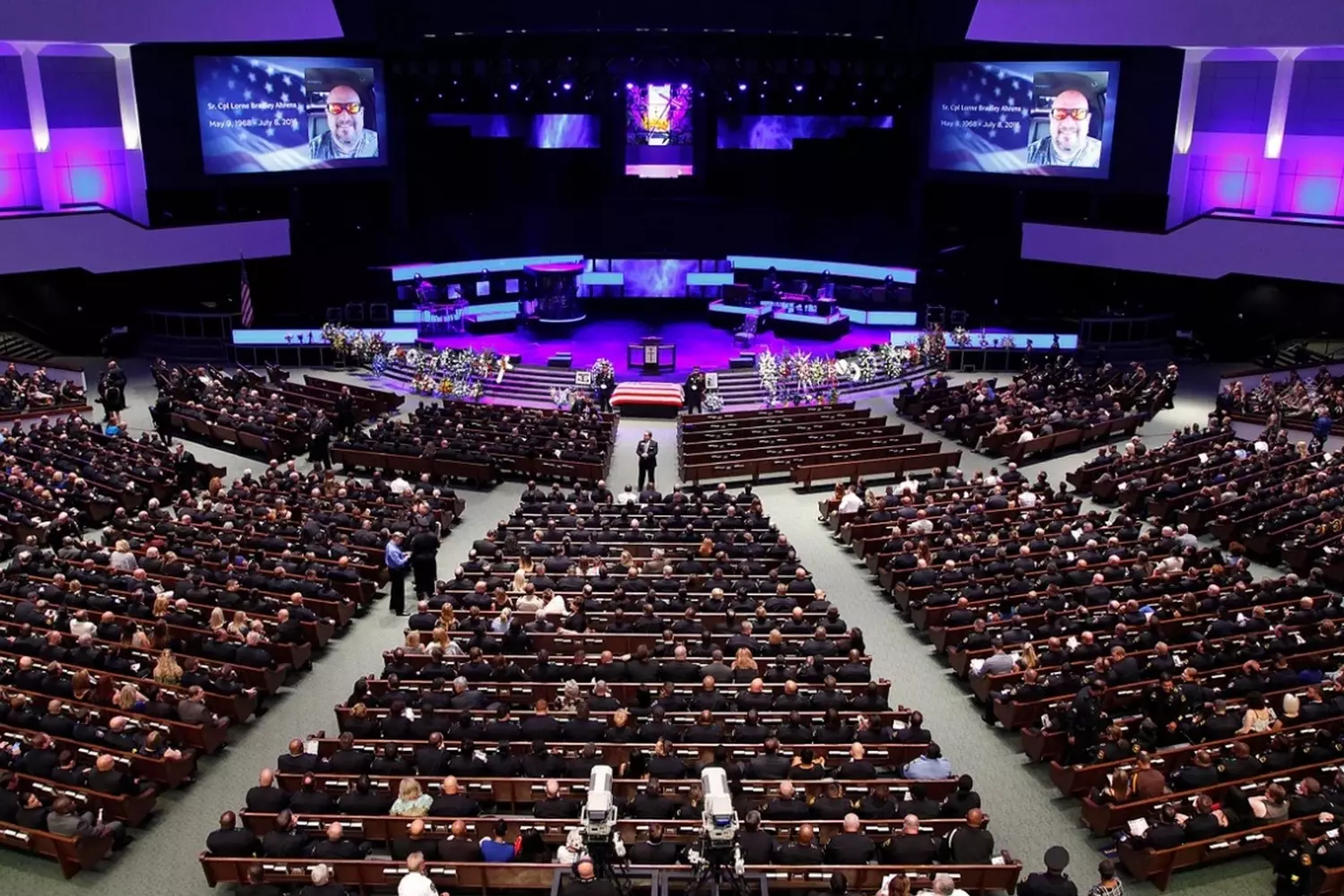
Discover America with American Butler
It’s impossible to truly understand the United States without understanding its religious landscape. Here, faith is not just a spiritual need — it’s a cultural code, a key part of national identity. It permeates everything: from architecture to language, from politics to advertising.
If you want to do more than just see America — if you want to feel it, to dive into its cultural depth — start by exploring what its people believe in.
American Butler is here to help you not just travel, but experience each day as a discovery. Whether you want to visit historic churches, unique temples, or immerse yourself in traditional atmospheres — we’ll organize a personalized tour with a professional guide. We’ll introduce you to the culture, history, and the deeper meaning behind it all.














